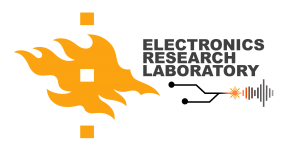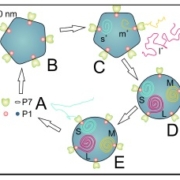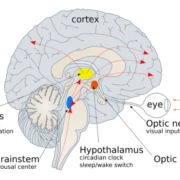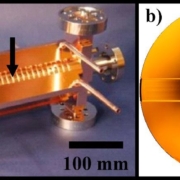PERMALINKS
http://urn.fi/URN:ISBN:978-951-51-2788-4
https://helda.helsinki.fi/handle/10138/239934
Prolonged time awake increases sleep drive and causes sleepiness. Increasing sleep drive induces rapid and uncontrolled sleep initiation leading to unstable cognitive performance which is comparable to alcohol intoxication. Sleepiness causes 10 – 20 % of traffic accidents hence being a major identifiable and preventable cause of accidents. Even though the severeness of sleepiness -related accidents and hazards have been recognized and the state of New Jersey (USA) even has a law that forbids driving after being awake for more than 24 h, there is no reliable on-site test for estimating total time awake of a person.
A reliable, objective, and practical metrics for measuring sleepiness outside the laboratory would be valuable. This thesis presents a novel approach and examines whether an eye movement based metric could serve as an on-site test metric for time awake.
The rationale for the studying the use of eye movements to estimate overall time awake is as follows: Different cognitive functions, especially attentional ones are vulnerable to sleepiness. The attentional and oculomotor processes share neuroanatomical networks in the brain and saccadic eye movements have been used to study attentional functions. Moreover, saccadic eye movements are sensitive to sleepiness.
The thesis consists of two parts: 1) Algorithm development for electro-oculographic (EOG) feature extraction to enable effective and practical analyses of measurements conducted outside the laboratory, and 2) Development of an eye movement based metric to estimate prolonged time awake.
Saccadic eye movements were measured from eleven healthy adults every sixth hour with EOG in a 8-minute saccade task during 60 h of prolonged time awake. The saccade task performance, estimated as the number of saccades, decreased as a function of time awake on an individual level. The saccadic performance differed between the participants but was stable within participants (tested with 5 participants). The circadian rhythm affected the saccade task performance. Thus, the three-process model of alertness (TPMA) was fitted to, and the circadian component (C-component) was removed from, the measured data. After removing the C-component, the linear model revealed a significant trend for six out of eleven participants.
The results imply that saccades measured with EOG could be used as a time awake metric outside the laboratory. The metric needs individual calibration before the time awake of a person can be estimated. More research is needed to study individual differences, optimize the measurement duration, and stimulus parameters.
Pitkittynyt hereilläoloaika lisää unipainetta ja siten väsymystä. Kasvava unen tarve aiheuttaa kontrolloimattomia torkahduksia, jotka heikentävät merkittävästi ihmisen tarkkaavuutta ja siten kognitiivisia toimintoja. Univajeen aiheuttama epävakaa tila on verrattavissa humalatilaan. Liikenneonnettomuuksista 10 – 20 % on väsymyksen aiheuttamia. Väsymys on näin ollen yksi suurimmista tunnetuista, estettävissä olevista onnettomuuksien syistä.
Väsymyksestä johtuvien onnettomuuksien ja katastrofien vakavuus on tunnistettu; mm. New Jerseyssä (Yhdysvallat) on säädetty laki, joka kieltää ajamisen yli 24 tunnin hereilläoloajan jälkeen. Mittalaitetta, jolla kenttäolosuhteissa pystytään mittaamaan luotettavasti, objektiivisesti ja käytännöllisesti kuljettajan hereilläolon kokonaisaikaa ei kuitenkaan ole tällä hetkellä saatavilla.
Tässä väitöskirjassa on kehitetty silmänliikkeisiin perustuva mittausmenetelmä, jonka avulla voidaan mitata hereilläoloaikaa laboratorion kenttäolosuhteissa, laboratorion ulkopuolella. Univajeessa kognitiiviset toiminnot heikkenevät, erityisesti tarkkaavuus sekä visuaalinen, silmänliikkeiden avulla tapahtuva ympäristön havainnointi. Tarkkaavuutta ja okulomotorisia toimintoja säätelevät osittain samat aivojen otsalohkoalueiden hermoverkot. Tästä syystä sakkadisia silmänliikkeitä voidaan käyttää sekä tarkkaavuuden että univajeen ja väsymyksen tutkimiseen.
Väitöskirja koostuu kahdesta osiosta: 1) Algoritmikehitystyöstä silmänliikkeiden tunnistamiseksi luotettavasti kenttäolosuhteissa silmänliikesignaalista, 2) Silmänliikepohjaisen menetelmän kehittäminen hereilläoloajan estimointiin.
Sakkadisia silmänliikkeitä mitattiin yhdeltätoista terveeltä aikuiselta kuuden tunnin välein 60 tunnin yhtäjaksoisen univajeen aikana. Silmänliikkeet rekisteröitiin elektro-okulografia (EOG) -menetelmällä 8 minuuttia kestävän sakkaditestin aikana. Tehtävässä suoriutumista arvioitiin sen aikana suoritettujen sakkadien lukumäärällä. Sakkadien lukumäärä laski hereilläoloajan funktiona kaikilla tutkittavilla. Sakkaditehtävässä suoriutuminen vaihteli henkilöiden välillä. Testin toistettavuutta tutkittiin viidellä henkilöllä ja se todettiin toistettavaksi. Vuorokaudenaika vaikutti tehtävässä suoriutumiseen ja tästä syystä vuorokausivaihteluun liittyvä sirkadiaaninen rytmi poistettiin vireystilaa mallintavan mallin avulla (three-process model of alertness, TPMA). Sirkadiaanisen rytmin poistamisen jälkeen sakkadien lukumäärän lasku hereilläoloajan funktiona oli lineaarinen kuudella tutkimushenkilöllä yhdestätoista.
Väitöskirjassa esitettyjen tulosten perusteella EOG-menetelmällä mitattujen silmänliikeiden avulla voidaan estimoida hereilläoloaikaa kenttäolosuhteissa. Tällä hetkellä mittaus vaatii henkilökohtaisen kalibrointimittauksen ennen varsinaista testimittausta. Lisää tutkimustyötä tarvitaan henkilöiden yksilöllisten erojen tutkimiseen, sekä mittausasetelman optimointiin kenttäolosuhteisiin laajemmin sopivaksi.



